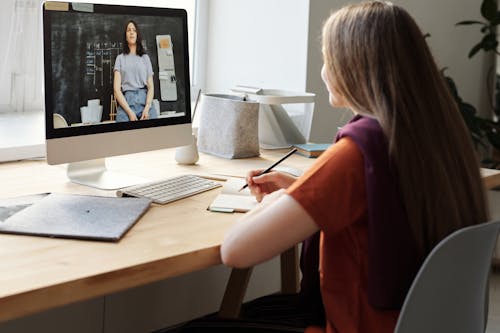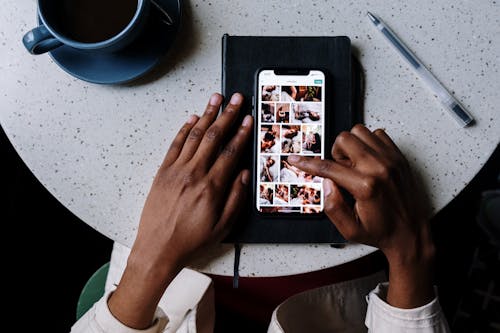1. Augmented Reality Color Testing

Before committing to paint or wallpaper, many use AR tools to see how colors look in their actual rooms. This habit reduces uncertainty and helps coordinate palettes more accurately. Digital color testing makes experimenting safer and less expensive. Home planning now involves a digital “try-before-you-buy” step for visuals.
It also inspires confidence to take creative risks. People can test bold shades without fear of permanent mistakes. The visual clarity helps streamline decisions. Ultimately, augmented reality changes the way we experience, evaluate, and finalize home aesthetics.
2. Smart Home Planning Apps

Apps that allow virtual floor planning and 3D visualization have changed the game. You can drag and drop furniture, test layouts, and even see how light moves through the room. This makes experimentation easier and reduces costly mistakes. People feel more confident making choices when they see their ideas in a digital sandbox first.
It also encourages risk-taking—trying bold colors or unusual layouts becomes less intimidating. You can quickly undo decisions without any commitment. However, reliance on these apps sometimes limits spontaneity in real-world decorating. Still, for many, seeing it digitally first makes the home truly feel achievable.
3. Online Reviews Before Anything Else

Before buying anything from paint to sofas, digital reviews shape our decisions. Checking multiple sources for opinions is almost second nature now. This habit has replaced relying solely on store advice or personal recommendations. People trust aggregated experiences from strangers as much as advice from friends or family.
It can make shopping more thoughtful, but also more stressful. Conflicting reviews can lead to analysis paralysis. Yet, it often helps avoid regretful purchases. Knowing what works in real homes, not just in a showroom, guides planning with more confidence.
4. Influencer-Endorsed Trends

Seeing popular content creators endorse specific products or layouts impacts home planning more than ever. A simple video can make a niche lamp or smart thermostat suddenly mainstream. Followers often replicate what they see, believing it’s the “modern” standard. This digital habit creates a cycle of trend adoption that moves fast and globally.
It’s easy to mimic without thinking about personal fit. People might buy things because they look good on camera, not because they suit everyday life. Still, influencer content sparks imagination. It’s a shortcut to exploring possibilities that might otherwise never occur to homeowners.
5. Virtual Shopping Experiences

Virtual reality and AR tools let people “place” furniture in their rooms before buying. This digital habit has reshaped how we approach scale, color, and texture. The convenience is undeniable—no heavy lifting or returns are required. It also gives a more realistic sense of space than measuring alone.
On the flip side, seeing something virtually can be deceiving if lighting or proportions aren’t perfectly calibrated. Yet, for those planning complex layouts, this habit can save time and money. People feel more in control of the design process. Digital previews act as a rehearsal before the real work begins.
6. Subscription-Based Design Services

From digital interior consultations to monthly decor boxes, subscription services guide planning. They deliver curated products and expert advice directly to your door or screen. This habit makes design feel accessible, even to those with little experience. Home planning is no longer a solo project—it’s supported by a constant digital companion.
It also creates an expectation that someone else knows what’s best. But for beginners, this guidance reduces anxiety. Users often discover styles they wouldn’t have explored independently. It’s like having a personal stylist, but for your living room.
7. Mood Boards and Digital Collages

Creating collages online is a modern extension of the classic scrapbook. People mix textures, colors, and furniture pieces in a virtual space to visualize their dream home. This habit makes abstract ideas tangible. It’s easier to experiment without physically moving furniture or buying new pieces.
The process also helps clarify priorities. You notice which colors dominate or which patterns feel off. It guides shopping decisions with a clearer vision in mind. In essence, digital mood boards make planning more intentional and less random.
8. Home Improvement Tutorials on Demand

YouTube and TikTok have replaced many traditional “how-to” guides. People watch step-by-step instructions before attempting renovations or DIY projects. This habit gives confidence to tackle projects that once required professionals. Home planning now involves learning skills alongside planning aesthetics.
It can also set unrealistic expectations, though—the curated success stories may hide challenges. Still, following tutorials allows homeowners to customize more deeply. It democratizes the process, putting knowledge in the hands of anyone with a screen. People feel empowered to take control of both design and execution.
9. Shopping Lists in the Cloud

Cloud-based apps let homeowners create detailed inventories and track purchases. This habit ensures nothing is forgotten and that everything coordinates with the design plan. Planning digitally helps avoid mismatched colors or duplicate items. It’s a simple yet powerful way technology shapes home preparation.
It also fosters more thoughtful consumption. Seeing everything organized digitally encourages prioritizing quality over impulse buying. You know exactly what’s needed before heading to a store. This habit makes home planning more organized and intentional.
10. Energy Efficiency Trackers

Smart devices now inform homeowners about lighting, heating, and energy use. Digital habits extend to monitoring efficiency when planning upgrades or new builds. People choose materials, appliances, and layouts based on long-term sustainability data. It’s a habit rooted in awareness, not just aesthetics.
This influences not only the design but also the cost over time. Digital trackers make energy-conscious decisions concrete and measurable. It shifts the focus from purely visual appeal to functional, eco-friendly planning. Energy efficiency becomes a core factor, thanks to digital insight.
11. Scrolling for Inspiration

We spend hours on apps like Pinterest, Instagram, and TikTok, pinning dream kitchens and cozy living rooms. These endless feeds influence our taste, sometimes more than architects or designers ever could. People now come to design meetings with mood boards that are entirely digital, shaping decisions before a single sketch is made. It’s a little overwhelming, but it also democratizes creativity—everyone has access to the world’s interior styles at their fingertips.
The downside is that we can become obsessed with aesthetics over functionality. Someone might pick a stunning open shelving unit, but it doesn’t fit their storage needs. The scroll culture subtly dictates trends we feel we “must” follow. Even so, it’s exciting to see homes that reflect personal inspiration collected from all over the globe.
12. Online Community Advice

Forums, Reddit threads, and social media groups create a digital village of advice. People post questions, share problems, and crowdsource solutions for home planning. This habit replaces isolated decision-making with collaborative input. The digital conversation often shapes choices more than professional consultations.
It can also be a double-edged sword if opinions conflict. However, the shared experiences provide practical insight. Homeowners feel less alone in the process. Online communities turn planning into a collective learning experience.
This post 12 Digital Habits That Now Dictate How We Plan Our Homes was first published on Greenhouse Black.
